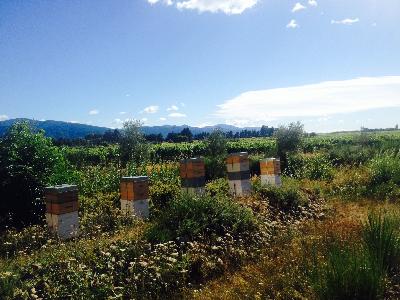
Embracing sustainability and biodiversity is an evolving process. By treating the mid-row areas in vines and olives more as a meadow than a lawn, we are able to create a near-constant supply of floral diversity. We achieve this through partial mowing and only mowing after the mid-rows have flowered. This provides a habitat and food source for many diverse forms of insect and other life. These populations bring a unique balance to our land.
The resultant meadow mowings are higher in carbon than fresh green grass. This provides a stable mulch that is an excellent food source for the fungal organisms in the soil, with our organic matter levels constantly increasing.
The meadow diversity is further enhanced with native plantings, orchard trees and extensive vegetable gardens around the vineyard sites. A key indicator of floral diversity is that we are able to have a small number of non-commercial beehives that require some maintenance, but no supplementary feeding. The end result is that we have recently been able to harvest more than 50kg of honey from our land.




